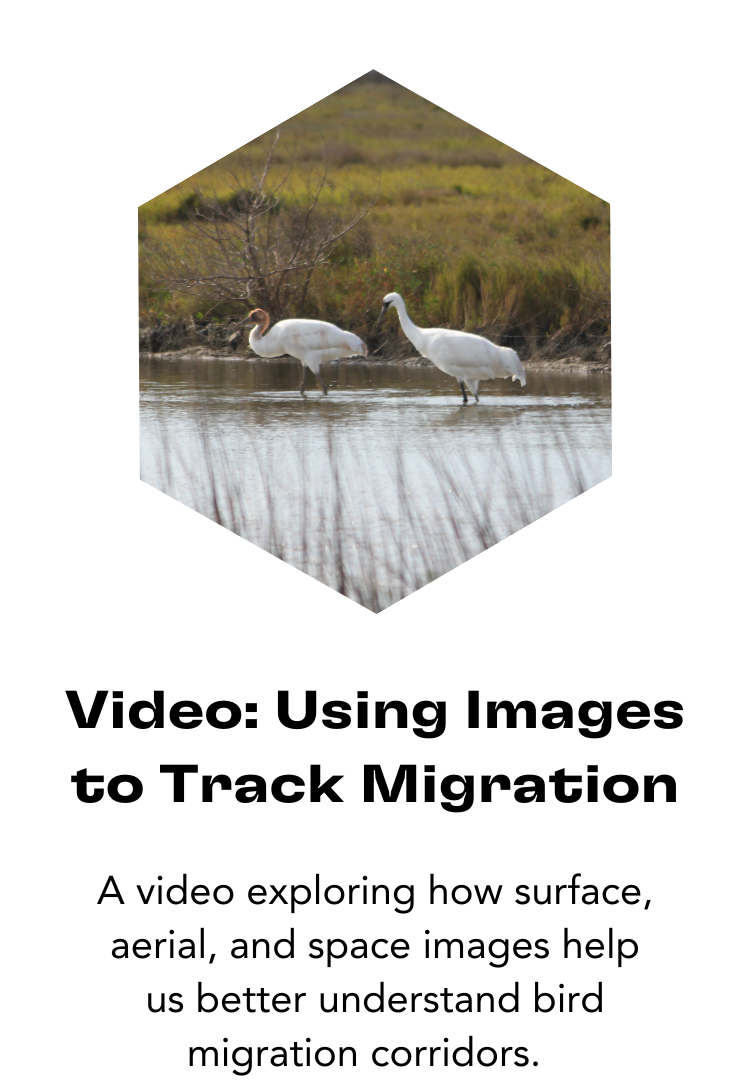
Whooping Crane Liftoff

During their migratory journey, Whooping Cranes travel to a wide range of habitats and locales that are all key to sustaining their energy and young. When mating pairs are successful at Wood Buffalo National Park, they will migrate to Texas with their new young, who will learn the migration path from these early journeys with their parents. This is why Whooping Cranes hatched in captive-rearing programs and then reintroduced to other populations need to be taught the migration path by humans. This has sparked some unique conservation work, including researchers wearing crane costumes while raising juveniles to prevent them from imprinting on humans, and using a tiny, 1-person aircraft to guide cranes along their migration route to help them learn the path.
Dr. Bondar takes aerial photographs in Whooping Crane stopover sites in Saskatchewan and the American Midwest.
When flocks land at Wood Buffalo National Park, they settle into their preferred habitats: shallow wetlands and grasslands. To create their nests, cranes gather wetland vegetation and mud into a mound in the shallow water that is well disguised from predators and add a depression in the center for eggs. The nests are typically 0.6-1.5 meters / 2-5 feet long, and the eggs will incubate in these nests for about 1 month. Often, young cranes will return to the same areas where they spent their early years, in both the nesting and wintering habitats
After migration to Aransas National Wildlife Refuge, Whooping Cranes take advantage of the bays, marshes, and salt flats to feed and rest over the winter season, eating a diet especially heavy in blue crabs, clams, and wolfberry fruits. Whooping Cranes are omnivores and require their habitats and stopovers to have an abundance of their main food sources: small crustaceans, small fish, insects, grains, and marsh plants, among other things.
The migration path of the Aransas-Wood Buffalo population is fine-tuned to provide all the necessary habitat and resources they need for survival and reproduction. However, disruptions that alter this path and its viability are increasingly common and threaten the population’s recovery. For instance, stopover habitat has been lost due to the construction of wind farms which Whooping Cranes avoid, human and boat traffic in wintering habitats displaced cranes, and declines in blue crab populations threaten their survival in Texas.
Explore more below to learn about Whooping Cranes!




Sources:
- UNESCO: https://whc.unesco.org/en/list/256/#:~:text=Outstanding%20Universal%20Value,-Brief%20synthesis&text=Wood%20Buffalo%20National%20Park%20is,wood%20bison%2C%20a%20threatened%20species
- Government of Canada: https://parks.canada.ca/pn-np/nt/woodbuffalo/nature/science_nature/Cranes_Grue
- All About Birds: https://www.allaboutbirds.org/guide/Whooping_Crane/overview
- Hinterland Who’s Who: https://www.hww.ca/en/wildlife/birds/whooping-crane.html
- Government of Texas: https://tpwd.texas.gov/publications/pwdpubs/media/pwd_bk_w7000_0013_whooping_crane.pdf